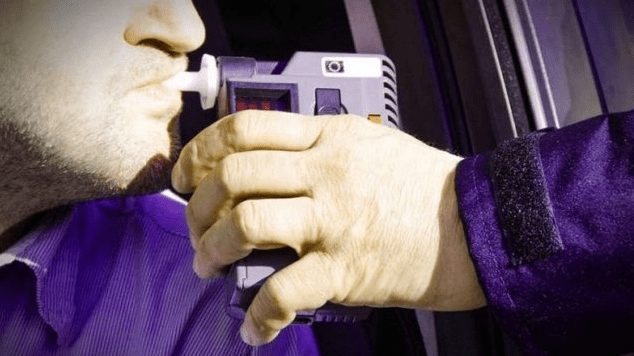
How is an alcohol tester made and can it be tricked
Christmas and New Year holidays are holidays, but there are even more holidays ahead in the coming days. This is the time of year when you drink the most alcohol. And one of the biggest problems is drivers who boldly get behind the wheel when drunk. Accordingly, there is a real danger that they will be detained by the police and prosecuted for violating the law. To do this, they must be charged with driving after drinking, and this is usually done with a tester available to law enforcement officers.
To avoid such a development of events, the most important thing is not to drive in this state. In general, it is good that each driver has his own tester to check the blood alcohol content (BAC) and, if it exceeds the legal limits, choose a different mode of transportation accordingly.
How does the tester work?
The first breath alcohol testing devices were developed in the early 1940s. Their goal is to make life easier for the American police, because a blood or urine test is inconvenient and unconstitutional. Over the years, testers have been upgraded many times, and now they determine BAC by measuring the amount of ethanol in the exhaled air.

Ethanol itself is a small, water-soluble molecule that is readily absorbed through the stomach tissue into the blood vessels. Because this chemical is very unstable, when alcohol-rich blood passes through the capillaries into the alveoli of the lungs, the vaporized ethanol mixes with other gases. And when a person blows into the tester, the infrared beam passes through the corresponding air sample. In this case, some of the ethanol molecules are absorbed, and the device calculates the concentration of 100 milligrams of ethanol in the air. Using a conversion factor, the device converts the amount of ethanol to the same volume of blood and thus provides the result to the investigator.
The maximum permissible blood alcohol level varies from country to country. The problem, however, is that the alcohol testers used by the police are inaccurate. Numerous laboratory studies show that they may have a serious abnormality. This can benefit the subject, but it can also harm him even more, since the result is incorrect.
If a person drinks 15 minutes before taking the test, the retention of alcohol in the mouth will lead to an increase in BAC. An increased benefit is also seen in people with gastroesophageal reflux disease, as aerosolized alcohol in the stomach that has not yet entered the bloodstream can cause belching. Diabetics also have a problem because they have higher levels of acetone in their blood, which aerosols can confuse with ethanol.
Can a tester be tricked?
Despite evidence of testers' errors, the police continue to rely on them. This is why people are looking for ways to trick them. Over almost a century of use, several methods have been proposed, some of which are downright ridiculous.

One is to lick or suck on a copper coin, which should "neutralize" the alcohol in your mouth and therefore lower your BAC. However, air eventually enters the device from the lungs, not from the mouth. Therefore, the concentration of alcohol in the mouth does not affect the result. Not to mention that even if this method worked, there would no longer be coins with sufficient copper content.
Following this flawed logic, some people believe that eating spicy foods or mint (mouth freshener) will mask blood alcohol. Unfortunately, that doesn't help in any way either, and the irony is that using them can even raise blood BAC levels since many mouthwashes contain alcohol.
Many people think that smoking cigarettes helps too. However, this is not at all the case and can only do harm. When a cigarette is lit, the sugar added to the tobacco forms the chemical acetaldehyde. Once in the lungs, it will only further increase the test readings.
However, there are ways to trick the tester. Among them is hyperventilation - rapid and deeper breathing. Numerous tests have shown that this method can lower blood alcohol levels. The success in this case is due to the fact that hyperventilation clears the lungs of residual air better than normal breathing. At the same time, the rate of air renewal is increased, leaving less time for the alcohol to penetrate.
For such an action to be successful, several things need to be done. After strong hyperventilation, take a deep breath into the lungs, then exhale sharply and decrease the volume sharply. Stop air supply as soon as you hear a signal from the device.
All testers require that you exhale continuously for a few seconds before performing the test. The device needs residual air from the lungs, and it only comes out on exhalation. If the airflow changes quickly, the device will respond faster when reading, thinking you are running out of air in your lungs. This can confuse the examiner that you are doing everything right, but even this trick does not guarantee complete success. It has been proven that it can reduce readings with a minimum ppm, i.e. he can save you only if you are on the verge of the acceptable amount of alcohol in the blood. All in all, there is no reliable way to mislead an alcohol tester.

The only sure way to get away with drunk driving is not to drink before you drive. Even if there is a means by which you can fool the tester, it will not save you from the distraction and delayed reactions that occur after drinking alcohol. And this makes you dangerous on the road - both for yourself and for other road users.